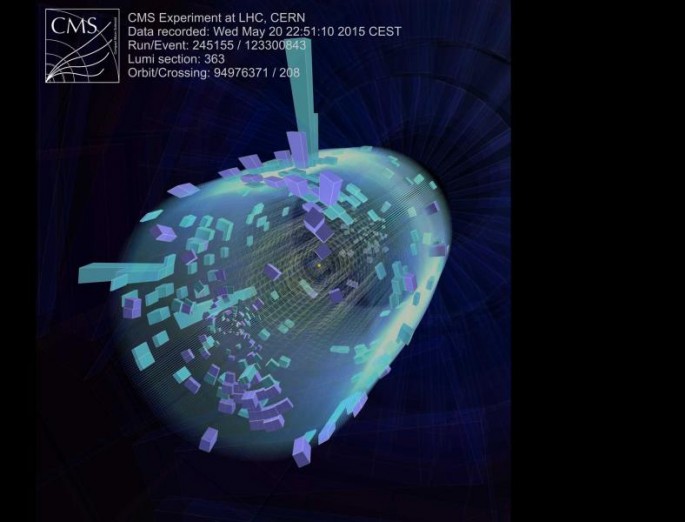After two years of shutdown due to power upgrades, the Large Hadron Collider at CERN just outside Geneva, Switzerland, has already set a new energy record using this new energy boost where the world's biggest particle smasher already conducted tests that reached 13 teraelectronvolts.
The LHC functions by using powerful acceleration rates of subatomic particles and then smashing them together into a collision from opposite directions. The latest test involved positively charged protons that will run a series of tests on equipment that are specifically designed to protect the detector from stray particles.
The first beam ran through the collider, around the ring last April 10 with energy levels of 6.5 TeV which is the first test in two years. After this first beam warming up the system, the test was followed by first particle collisions that were handled at a lower energy level of 450 GeV.
According to Jorg Wenninger of the LHC Operations team, during the first series of tests, the beams did not meet within the LHC's massive ring, as they often miss each other due to new energy levels of 6.5 TeV. These beams are also so minute in size, at 20 microns in diameter which is also 10 times smaller at 450 GeV.
Particle physicists solved this problem by scanning around the beams, adjusting the orbit of every beam until the collision rates that are yielded by the experiements provide results that show that they are now colliding at a proper rate.
The LHC team will continue to monitor the detector by going around, observing the massive ring for several hours where they will measure the quality of the beams and evaluate the effectiveness and efficiency of the current system setup of the collider.
Even if the LHC is capable of controlling 2,800 particle packets in one time, these current collision tests are being carefully conducted with just one or two packets for every beam.
According to Dan Tovey from the University of Sheffield, in 2012, everything was successful at 8 TeV however, many factors have changed since then, within the machine and including the experiments as well. At this point, there is no new physics discovery with these tests however it is deeply helping us to learn the crucial importance of these experiments.
These high energies require electrical currents to reach 12,000 amps where superconducting cables can lose their effective properties if small amounts of stray energy are detected. Superconductivity also needs a low-temperature environment where the magnetic coils are supposed to measure precisely 1.9 degrees above absolute zero or -271 degrees Celsius meaning if a tiny amount of energy released by the magnet will warm the coils, it will stop everything from superconducting.
The LHC experiments are designed to discover the secrets of the universe mainly, discovering the main particles that makeup the mass of the whole universe which is the elusive dark matter and in order to do that, particle physicists needs to smash atoms in the highest energies ever imagined. The second batch of experiments is slated to begin early next month.



























